CALPE & ALTEA
Designed by Rachel Gore

Designed by Rachel Gore
Spain’s expat capital, reaches a global milestone, explains Dilip Kuner
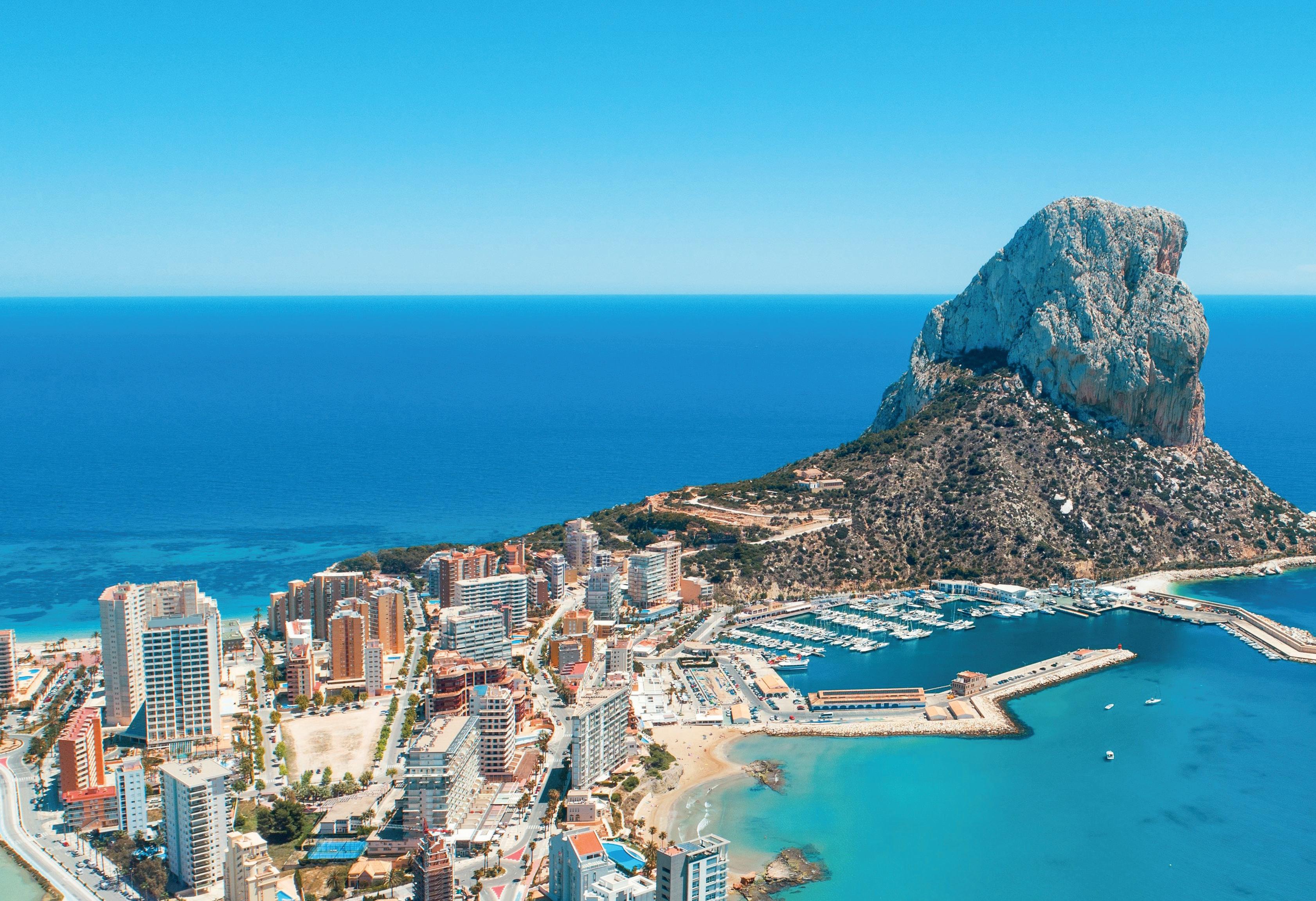
THE
fi rst time I visited Calpe, I was convinced I’d walked into the wrong country. It wasn’t the sun that threw me off, or even the Peñon de Ifach looming over the bay like some monumental guardian – it was the voices.
English drifted from a bakery queue, Dutch from a nearby café, and German from a couple
arguing amiably over sunscreen. Then someone greeted me in Valencian, and I realised this wasn’t confusion – it was Calpe. And it turns out my ears weren’t exaggerating.
The town recently crossed a quietly astonishing milestone: foreign nationals now make up over half of its population. More than 53%, to be exact – meaning Spanish residents are
technically the minority in this stretch of the Costa Blanca. It’s the only town in Spain with more than 20,000 people to reach that level of international mix.
But statistics don’t quite capture it. You feel it on the street. The conversations switch languages mid-sentence, and the menus carry three translations as naturally as a tri-
lingual child. Calpe, once a sleepy fi shing town, now beats to a global rhythm. And this shift has changed everything – not just the faces in its markets, but the entire logic of how it lives and breathes.
Continues on next page



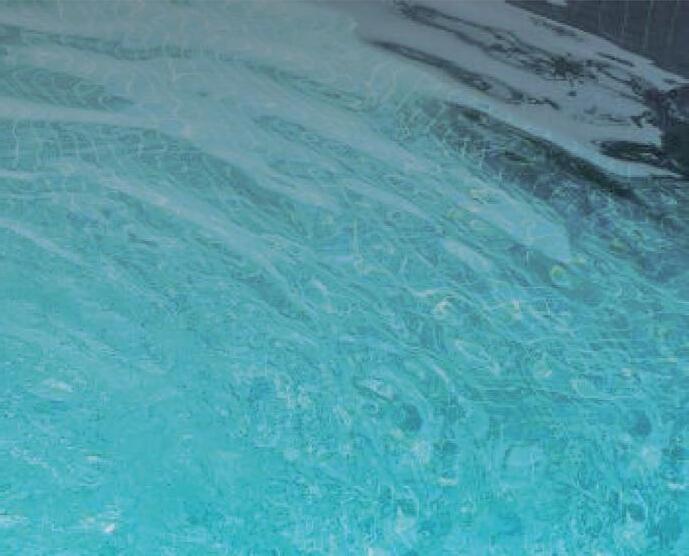


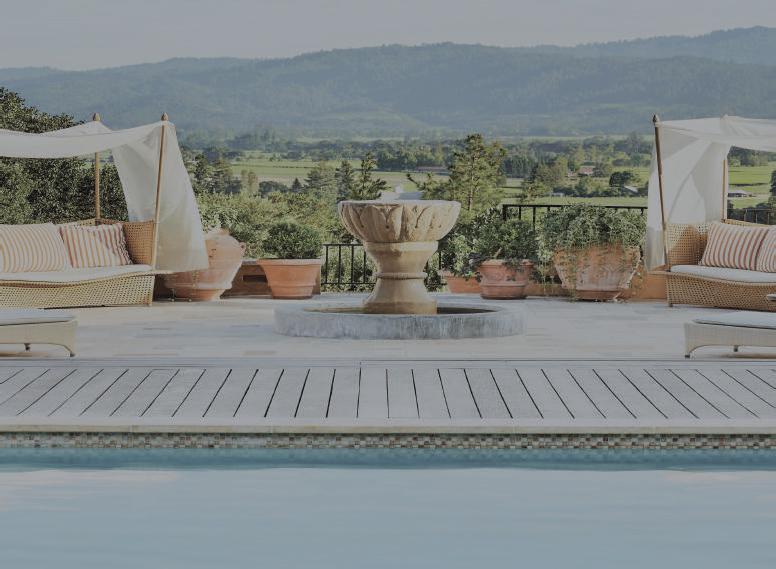
To truly understand Calpe’s identity, you need only look a few kilometres down the road to its neighbour, Altea. Where Calpe is vertical, cosmopolitan, and intensely practical, Altea is horizontal, artistic, and gently Bohemian.
Altea’s Old Town, with its blindingly white stucco buildings and blue-domed church, climbs from the shore up a soft hill, attracting painters and photographers.
Calpe, meanwhile, is the place where people actually live and work yearround, seeking out the easy access to services, the large flat beaches, and the steady, global pulse.
It’s this dynamic - Altea offering the Spanish coastal dreamscape and Calpe providing the reliable, international infrastructure - that makes this stretch of the Marina Alta so unique.
For decades, coastal towns here thrived on a seasonal heartbeat: crowded summers, empty win-
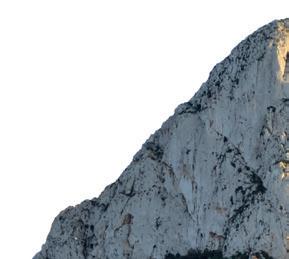
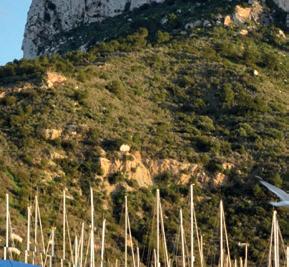
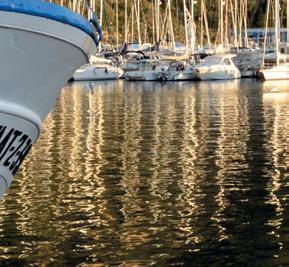
ters. But Calpe and Altea have broken that cycle. The foreign residents didn’t come for a fortnight; they came to stay. They needed schools, doctors, plumbers, yoga teachers... They didn’t vanish in October.
So now, even on a chilly Wednesday in January, you’ll find restaurants open, cyclists speeding past the promenade, and the scent of fresh coffee floating from bakeries that once shuttered for the season.
This year-round pulse has sparked a quiet revolution. The town’s mild winters and mountainous backdrop make it a magnet for cyclists and hikers escaping northern cold. You see them every morning, groups in bright Lycra pedalling through the mist toward the Sierra de Oltà, the clatter of gears echoing against limestone cliffs.

The air smells faintly of sea salt and new tarmac.
But life here isn’t just about sport. It’s about balance – a kind of comfort-
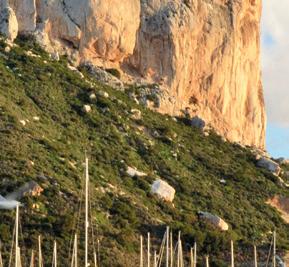

able coexistence between Spanish tradition and European convenience.
Klaus Schmidt, a German expat who moved with his family five years ago, puts it simply: “We came for the weather but stayed because of how easy everything is. My kids go to a local school, but play football in English. I go to a Spanish doctor, but my physio speaks German. We don’t have to choose between home and here. Calpe gives us both.” Walk through town and you’ll see what he means. There’s a language exchange in the main square every Thursday, chatter spilling from tables like music.
Hiking clubs meet at dawn by the Peñón’s trailhead. You’ll even hear a bit of Russian at the market when haggling over oranges.


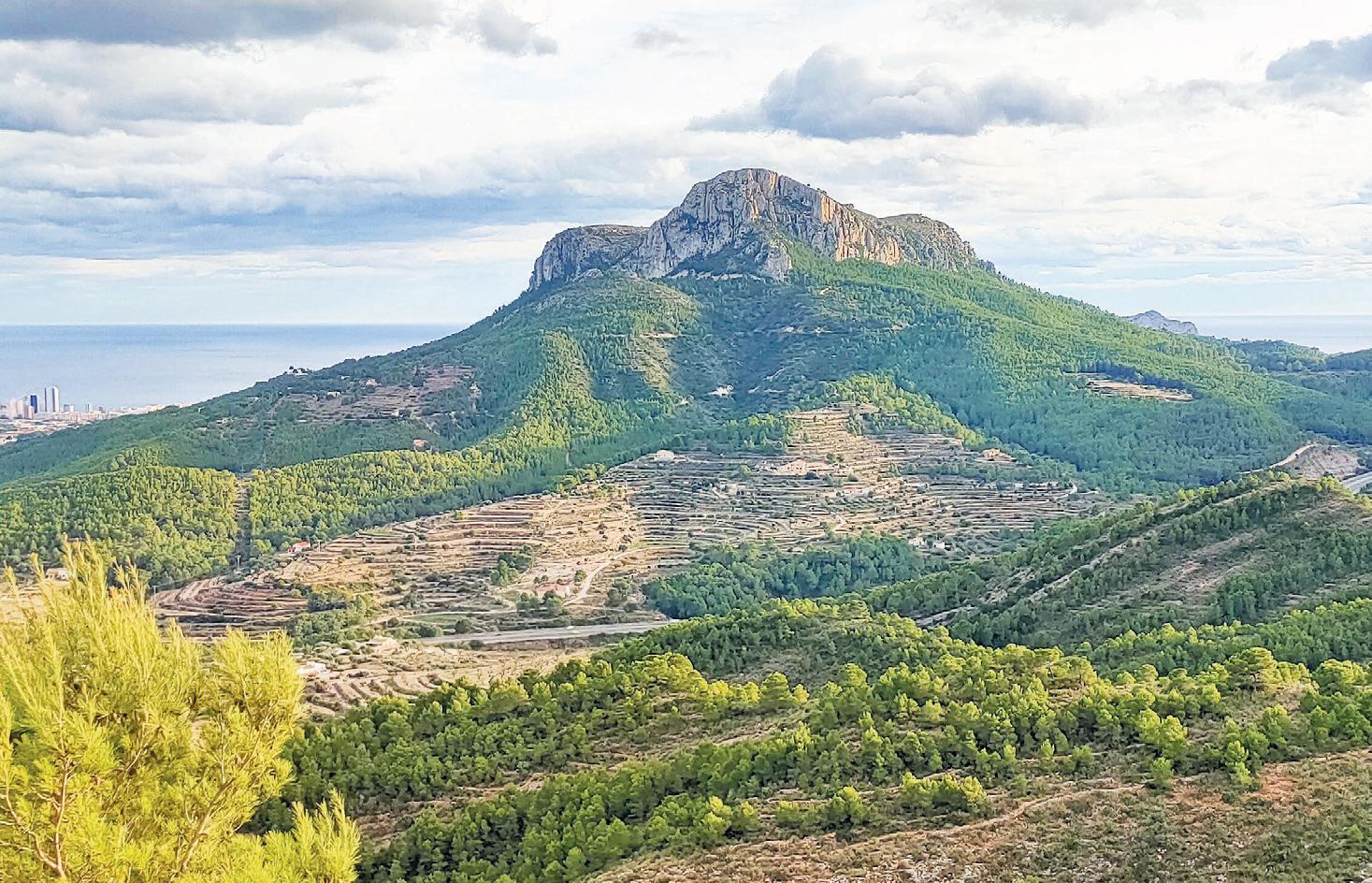
Yet beneath this international blend, Calpe still hums with its Valencian roots – the smell of paella on a Sunday, the rhythmic thump of fiestas, the patience of fishermen mending nets by the port.
Still, this success brings growing pains. The population density near the seafront can feel suffocating in August, and parking is a local legend in itself.
The council has started tackling
these pressures: better waste management, greener transport options, and even a beach smoking ban (which, to be honest, makes the sea air cleaner and the sand less of a cigarette graveyard). These aren’t glamorous reforms, but they signal something rare for a tourist town – long-term thinking. And maybe that’s the real story. Calpe’s charm isn’t in pretending to be Spanish or international, old or modern – it’s in managing to be all of it at once.
The Rock stands immovable, yes, but the community below it shifts and adapts like the tide. And on certain evenings, when the sun slips behind the Peñón and the sky turns a slow copper, you can’t help wondering if this small town on the Costa Blanca hasn’t quietly reinvented what Europe itself looks like – a place where nobody quite belongs everywhere, yet everyone belongs somewhere.



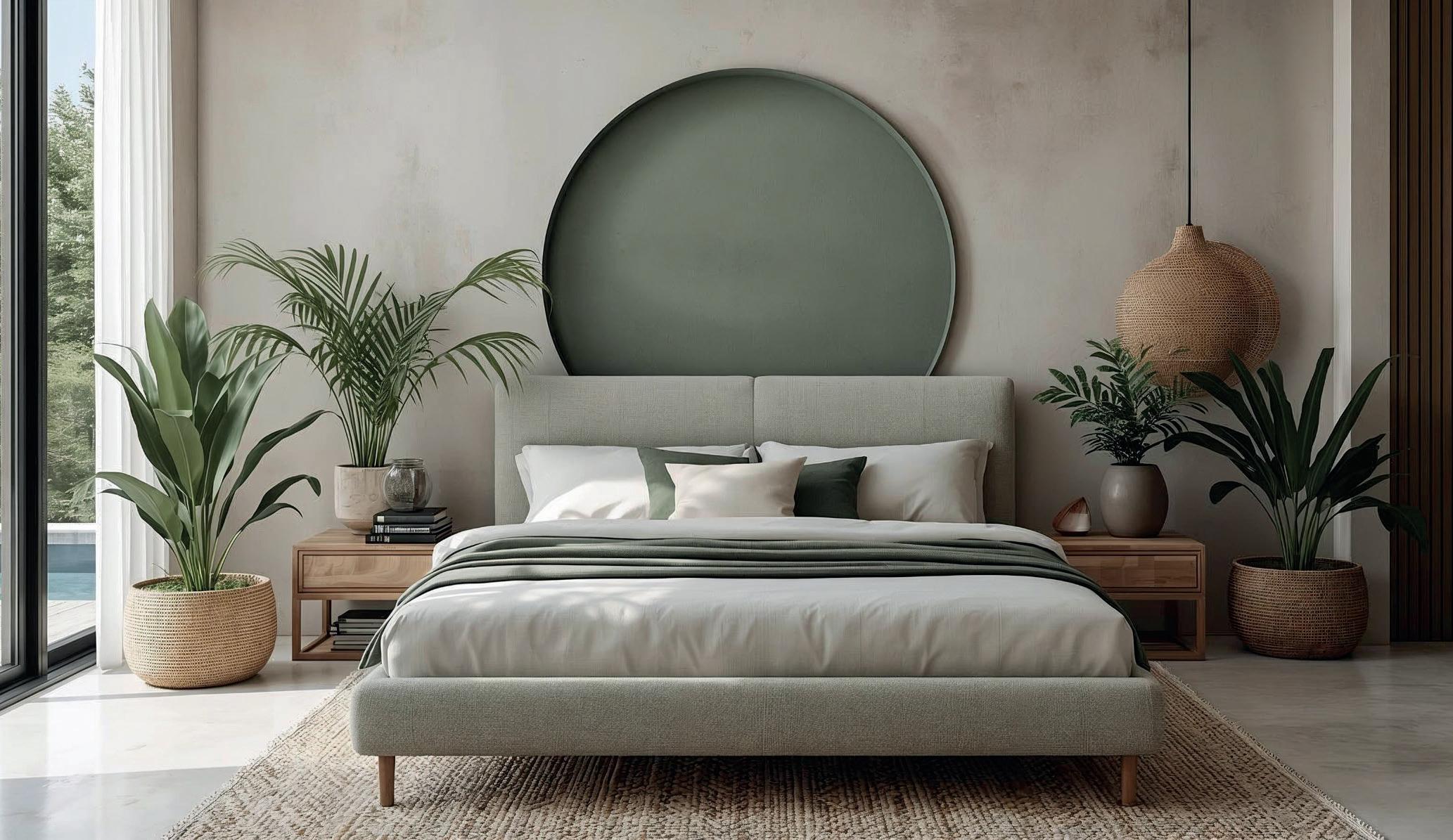
SPECTACULAR:
Calpe, its beaches, harbour and lagoon as seen from the top of the Peñon

You can’t really understand Calpe until you’ve climbed the famous Peñon.
From afar, it looks manageable – like a giant’s knuckle rising from the sea. Up close, it’s something else entirely.
I still remember my first climb: the screech of cicadas, the smell of hot dust, the wind whipping grit into my mouth as I gripped a rusted chain and thought, perhaps foolishly, “How hard can it be?” The path starts gently enough, winding through rosemary and pine. There’s a point about halfway up where you hit the tunnel – a rough, unlit bore through solid limestone. It’s cool and damp, the air thick with the smell of stone and moss. You emerge blinking into sunlight, only to realise the real climb is still ahead: steep, narrow, and scattered with loose rock. Yet every step brings a bigger view, until finally you reach the summit – 332 metres above the sea – where the world unravels in every direction. Altea shimmers to the south, Moraira to the north, and far below, the Mediterranean stretches like polished glass. Access past the tunnel is now limited, which makes sense. Too many feet wore down the rock. Visitors must book online, which, depending on your patience for bureau-


cracy, is either a minor inconvenience or an environmental victory. Still, it’s worth it. The Peñón isn’t just a climb; it’s a conversation with the landscape. You see gulls riding thermals, and if you’re lucky, a kestrel hovering mid-air like a thought that refuses to land.
Just across the road, Las Salinas offers the perfect counterpoint – horizontal calm after vertical effort. The salt lake glimmers like liquid silver, sometimes pink, depending on the season and the whims of its microorganisms. In the late afternoon, when the light hits it right, the reflection of the Peñón on that rosy water feels almost unreal, as if nature decided to play at being an artist.

Once used for salt production, Las Salinas is now a protected habitat, home to waders and flamingos. You’ll spot them standing like question marks in the shallows, their pale feathers tinged with blush. The soundscape here is delicate – soft wind, occasional car, and the odd squawk of a startled bird. It smells faintly briny, like tears drying on skin.



down to take it’s

Both the Peñón and the salt flats are fragile, so locals ask visitors to tread gently – stay on marked paths, keep voices low, and take your rubbish home. It’s not about rules; it’s about respect. After all, these landscapes existed long before us and, if treated right, will outlast our noise and sunscreen and selfies.



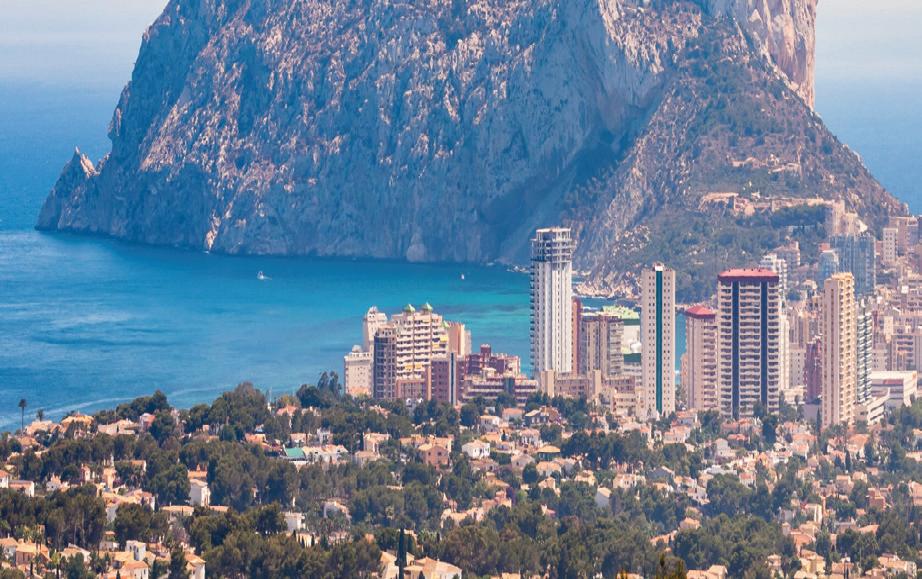
And standing there between rock and water, you can’t help noticing how these two opposites – the towering vertical and the shimmering flat – define Calpe’s character.
It’s a town built between extremes: stone and sea, noise and silence, old and new.
Which makes you wonder, as the flamingos lift off in slow pink arcs, whether balance is ever really still – or if it’s just the art of constant adjustment.
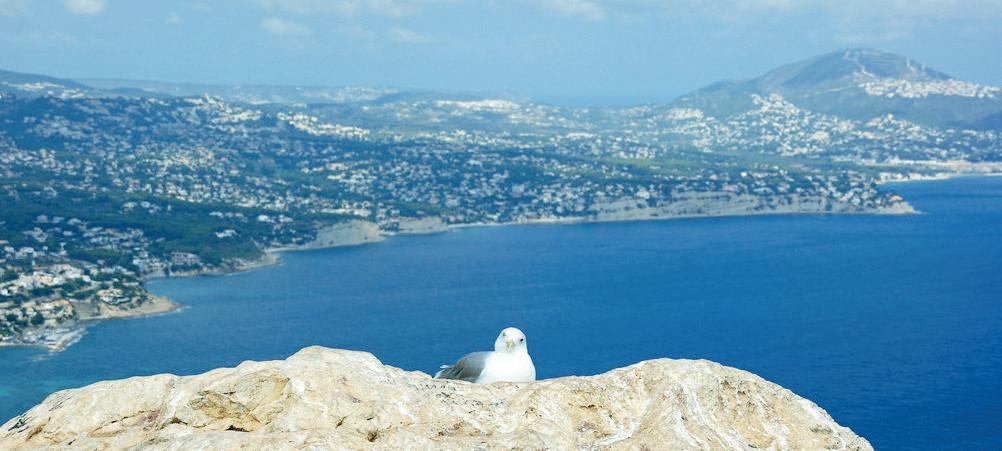






FOR over 25 years, Hamiltons of London has been helping thousands of clients buy, sell, and rent property in the beautiful northern Costa Blanca region of Spain.
From coastal beaches to peaceful inland valleys, our approachable and multilingual team offer in-depth local knowledge and a personal approach to every transaction.
If you're a seller ready to unlock the value of your home, we're eager to partner with you. Our proactive marketing and innovative strategies reach global buyers. With expert valuations, photography, videos and targeted exposure, we'll attract serious offers - join our growing list of satisfied vendors who've achieved outstanding results. Buyers, discover your dream: whether a seaside apartment, mountain retreat, or luxury villa, we'll understand your needs and match you perfectly.
Our team guides you every step, from exclusive listings to a comprehensive finding service via trusted local partners, securing the best homes at the right price.
For landlords, our dedicated management handles longterm rentals seamlessly. We handle marketing to attract top tenants, thorough referencing, contract prep/renewals, communication, rent collection, inspections, and repairs/maintenance - easing all burdens for seamless long-term rentals.
Based in five convenient offices: Moraira as our head office, Jalon covering the inland areas plus Denia, Jávea, and Calpe, and our new office in Altea serving from Altea to Finestrat.
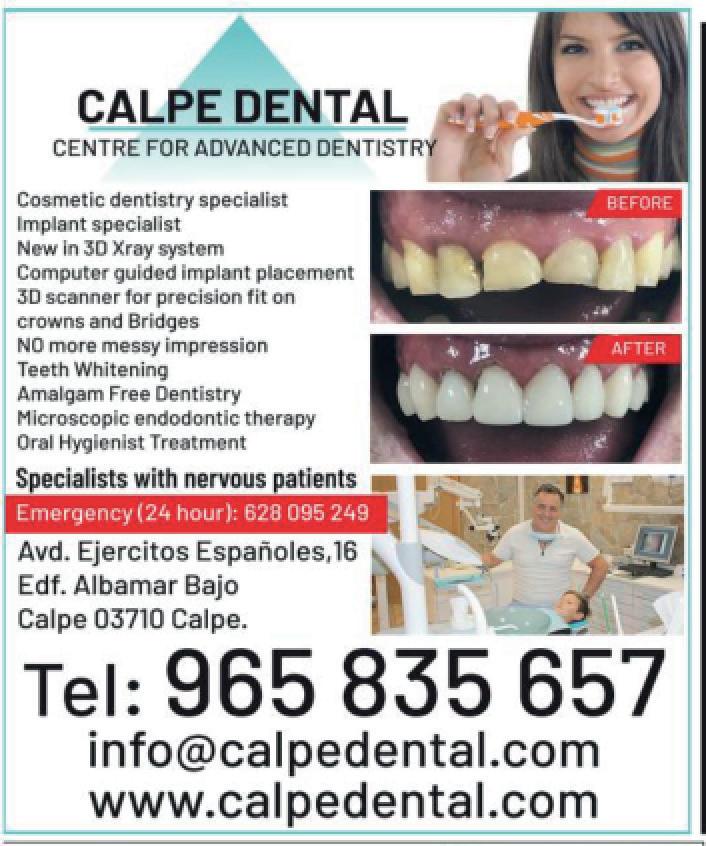
It’s hard not to grin when someone tells you that Calpe’s Queen’s Baths were never actually baths. I first went expecting marble pools and mosaics, maybe even a faint echo of some longdead empress lounging in the steam. Instead, I found rocky tidal pools, rough and sunlit, carved straight into the coast. Turns out, the Romans weren’t bathing here at all – they were farming fish.
The Baños de la Reina date back nearly two thousand years, a complex of stone basins connected by little canals where sea water flowed in and out. Standing on the edge, you can still see the grooves cut for sluice gates. If you crouch low enough, you’ll catch the faint smell of salt and seaweed, the same scent Roman workers must’ve known. And yes, you can still swim there, right beside those ancient cuts in the rock, floating where once mullet and bass fattened for the empire’s tables. There’s something almost cheeky about that –the Mediterranean shrugging at time. Just inland, the Old Town is a different story altogether – narrow lanes, worn steps, flashes of colour from painted walls and flags. The Torreó de la Peça stands sentinel, a reminder of the town’s medieval defences. And yet, just beyond its shadow, a staircase painted like the Spanish flag draws Instagrammers like moths. The clash between centuries feels deliberate, like Calpe refuses to choose which version of itself to present.
One evening, wandering through the cobbles, I stopped at a bar where locals argued about football while a British couple asked for directions in halting Spanish. A mural of a woman’s face (pictured right) stretched across the wall, her eyes bright blue and slightly too large – the artist’s mark of modernity. That mix, that layering, is Calpe in miniature: ancient engineering underfoot, street art overhead, and the sound of half a dozen accents bouncing off the stones.
The link between past and present runs deeper than aesthetics.
The Romans built their fortune on salt and fish. Calpe still trades in both. From the Baños to the fish market, the same sea provides. It’s continuity disguised as change. And maybe that’s why this town feels so grounded – its roots aren’t in nostalgia but in persistence.


If you want to feel Calpe’s heartbeat, skip the museum and head to the port at fi ve in the afternoon. The fi shing boats return just as the light begins to mellow, their engines grumbling like tired beasts. The air smells of diesel, salt, and wet rope. It’s loud, messy, and completely un-
romantic – which is exactly why it’s perfect.
At La Lonja, the daily fi sh auction begins. Fishermen haul in crates of gamba, squid, and gleaming dorada, while buyers watch from a glass gallery above, fi ngers twitching on electronic pads. The speed of it is astonishing – bids fl ash, numbers change, and within minutes, today’s catch is already spoken for. Below, you hear the thud of


crates, the scrape of metal on tile, and the constant low murmur of negotiation. Visitors can watch, though you’re wisely kept out of the way. The best part comes after, when the restaurants by Cantal Roig beach fi re up their grills. If you time it right, you can eat the same fi sh you saw unloaded an hour earlier. Calpe doesn’t pretend. It works. It sweats. It serves food that’s better than it looks because it hasn’t been polished for tourists. The prawns are scarlet and sweet, the arroz del senyoret rich and sticky. Eat with your hands, wipe your mouth on a napkin, and watch the sky turn from gold to

violet over the Peñón.
And maybe that’s the perfect ending to a Calpe day – not the climb, not the history, but the table. Sitting there, salt on your lips, sun on your skin, watching boats bob against their reflections, you realise that this small town manages to be ancient and modern, foreign and familiar, noisy and peaceful all at once, as if the Peñón itself breathes out a rhythm that everyone unconsciously follows – and isn’t that, in its quiet way, what every town is trying to become?

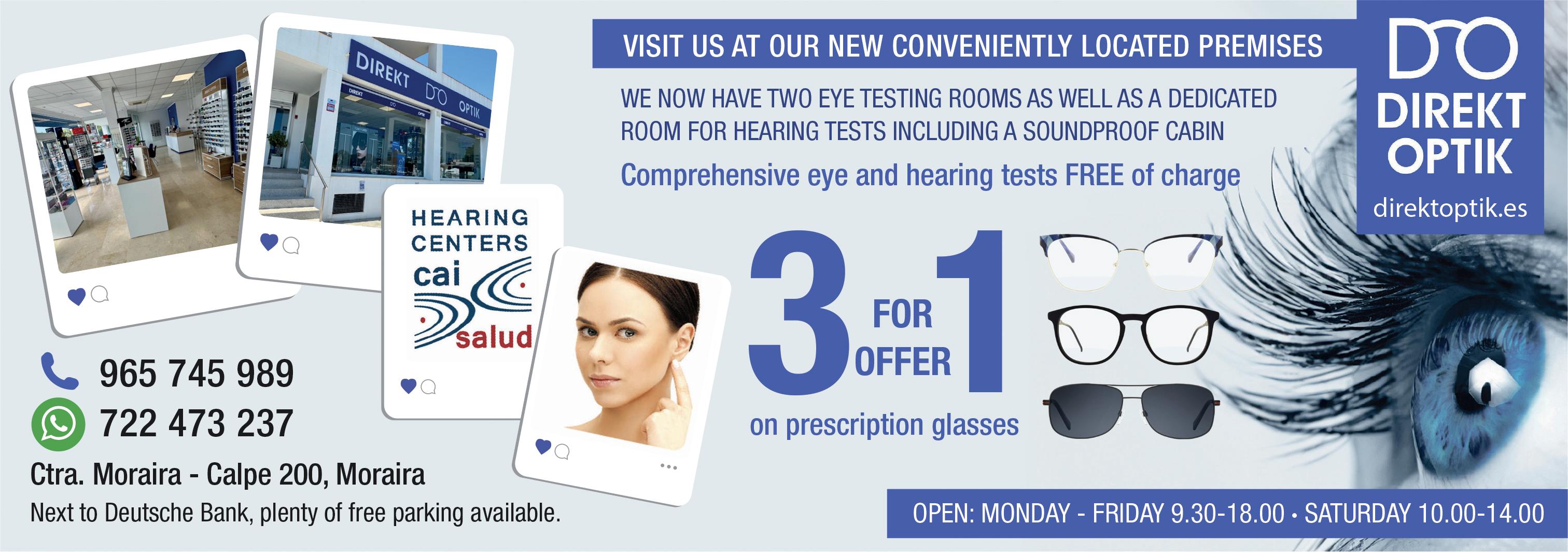
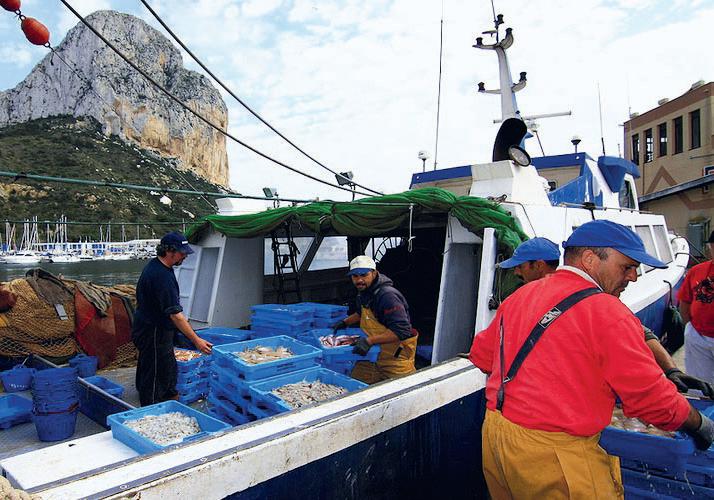








But











FORGET what you think you know about the Costa Blanca. Sure, there are the skyscraper resorts and sprawling, sun-drenched sands, but tucked between the jagged peaks of the Sierra de Bernia and the dazzling turquoise sea lies a town that moves to a slower, more romantic rhythm: Altea.
If you’re anything like me, you crave authenticity on holiday – and that’s exactly what Altea de-
somehow managed to hold onto its soul despite its growing popularity.
delivers.


Often described as one of Spain’s
most beautiful villages, it has

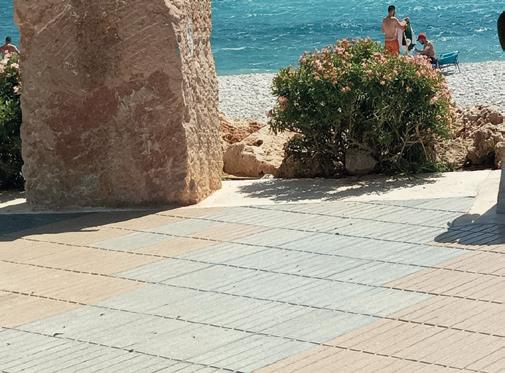
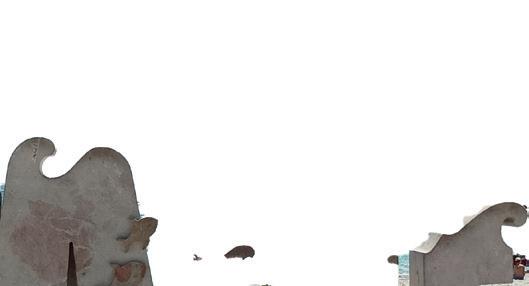
Your first mission? Head straight for the Casco Antiguo – Altea’s Old Town. I’m not going to lie, the climb’s a bit of a workout, especially on a scorching August afternoon, but trust me, it’s worth it. Don’t stress about a map – just let the maze of steep, cobbled alleyways guide you. Every turn offers a new photo waiting to happen: whitewashed houses offset by cascades of fuchsia bougain-




villea spilling from balconies. Eventually, you’ll stumble, a little breathless, into the Plaza de la Iglesia, the town’s spiritual and geographic heart. And there it is – the Church of Nuestra Señora del Consuelo. Those famous blue-and-white tiled domes, visible from almost anywhere on the coast, really do pop against the brilliant Spanish sky. Pull up a chair at one of the cafés, order a café con leche, and just take it all in. Then wander to the nearby Mirador de los Cronistas de España – that view will steal your breath faster than the climb did. Altea’s reputation as an artists’ haven is clear the minute you start browsing. This isn’t your standard souvenir fare – the

Old Town is filled with genuine art galleries and small studios where local ceramists, painters and jewellers actually work.
ning stroll.

Better be safe than sorry by getting a proper structural survey done
ALTHOUGH some estate agents still claim that ‘they don’t do surveys in Spain’ structural surveys (also called home inspections) are available locally and are just as worthwhile as in any other part of the world.
Buying a property is a big investment for most people, so it makes absolute sense to know what you are buying, identify any signifi cant defects early, and use this information when making an offer.



The result is a distinctly bohemian feel, especially in the evening when artisan stalls spill into the streets and the scent of jasmine mingles with grilled prawns drifting from hidden courtyard restaurants.
The beaches here aren’t your typical golden stretches – and that’s a good thing. Altea’s shores are mostly made up of clean, smooth pebbles, which keep the water crystal clear and lend the area a quieter, more relaxed feel than some nearby resorts.
Playa de la Roda is the most central, running alongside the lively Paseo Maritimo, perfect for an eve-
For a calmer spot, head north towards Cap Negret. And for something truly different, check out Marina Greenwich – promotional materials claim it sits exactly on the Prime Meridian (000° 00′ 00″), making it a fun geographical talking point even if that fact is more symbolic than scientific. Need a break from the sea? Altea’s got you covered. The Sierra de Bernia and Serra Gelada Natural Park both offer unforgettable hiking. Some routes are rugged and best tackled with proper shoes, but there are gentler options too –like the scenic trail to the Faro de l’Albir lighthouse just outside town, where the dramatic coastal


views are reward enough. If you visit on a Tuesday then don’t miss the bustling Altea Market. From fresh oranges and olives to local ceramics and handmade crafts, it’s a proper slice of local life – lively, colourful, and perfect for picking up authentic gifts.
Altea is special. A town that’s resisted the excesses of mass tourism, keeping its quiet dignity and undeniable charm. Go, wander, climb, and let this white jewel of the Mediterranean cast its spell. You won’t regret it.
The results of a survey might well help you negotiate a lower price or sometimes the survey will confi rm you are getting a great deal or even save you from a troublesome property.
For



If you cannot arrange a survey before paying a reservation or deposit a ‘subject to survey’ clause can be included when making payments (provided all parties accept).








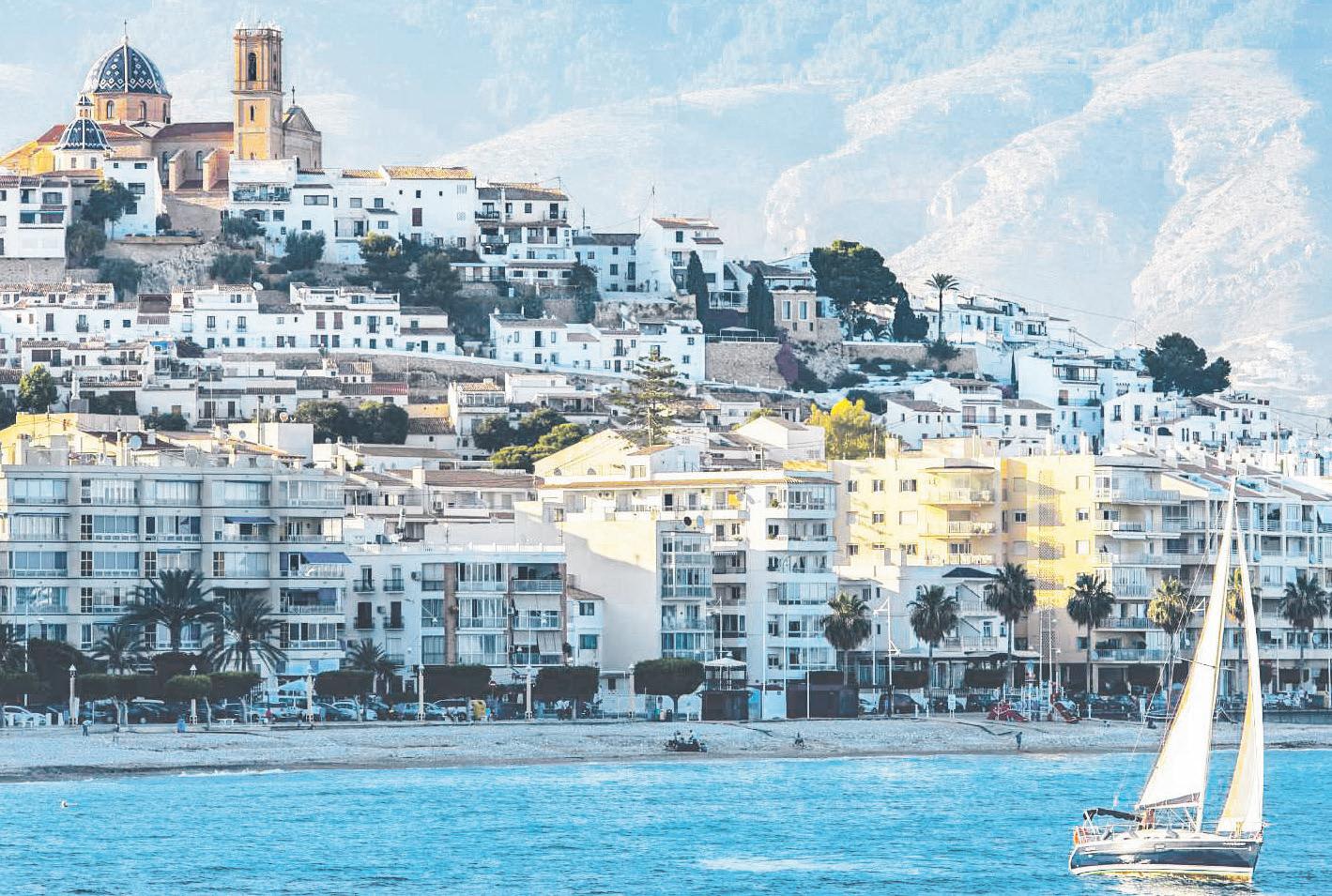

ALTEA: Its blue domed church dominates the skyline

Jávea · Moraira-Benitachell
ORKSHIRE Linen has over 20 years experience in home furnishing. Both our shops in Jávea and Moraira-Benitachell have everything you need to make your home comfortable all year round. Duvets with matching pillow cases, fitted sheets, blankets, toppers, mattress and pillow protectors, rugs, towels... the list is endless at Yorkshire Linen!
An electric blanket is cheaper than a heater because you would only warm the bed and not heat the entire room while you sleep.
Try and set it at a reasonable temperature to keep the costs down even further and stop you roasting during the night. Alternatively, you could also just turn it off once you’ve put your head down.
Curtains are really useful for all sorts of reasons. Apart from adding atmosphere to a room, there are weather reasons. For example, if it’s windy and/or raining outside heat loss from the home will increase. Blinds are great for blocking out all or some light and for privacy. Seasonal collections arrive weekly in our Jávea or Moraria-Benitachell shops. We have everything you need from indoors to outdoors to make big or small changes to your home or rental and our multi-lingual staff are always available to help you in any way they can.






The Agency Costa Blanca: A new standard in Mediterranean luxury
SINCE opening its doors in 2024, The Agency Costa Blanca has redefined what it means to experience real estate on Spain’s most desirable coastline. This isn’t just a brokerage - it’s a curated approach to luxury living, blending world-class service with intimate local knowledge.
Led by founding partners Alistair Barton and Leonie Ter Brugge, the team brings a fresh perspective to the Costa Blanca property market, already making an impact in Moraira, Javea, and Benissa Costa.
Backed by one of the world’s most recognised luxury real estate brands, The Agency Costa Blanca offers a bespoke experience rooted in trust, discretion, and market expertise. With a global network spanning 145 offices in 14 countries (six offices in Spain) and over $88 billion in sales, they’re uniquely positioned to connect the region’s most extraordinary homes with discerning international buyers. In fact the network consists of more than 3,500 global agents, who are all fully connected to
IF you live in Spain or elsewhere in Europe and are travelling abroad, there’s a good chance you’ve tucked your EHIC or GHIC card into your wallet and assumed you’re covered should the worst happen.
But according to a new survey by Staysure Expat, nearly 15% of English-speaking expats wrongly believe those cards give them full medical cover when travelling to the UK or across Europe.
What do the EHIC and GHIC Cover?
In reality, the European and Global Health Insurance Cards offer limited protection. They cover access to emergency state-provided healthcare, and nothing more. That means no private medical treatment, no repatriation if you need to be flown home, and no extras such as mountain rescue or private ambulance services.


The True Cost of a Medical Emergency
Even expats who return temporarily to the UK can face problems.
The NHS may not cover some treatments.
Without valid travel insurance, a sudden illness or accident could lead to thousands in medical bills — or leave you stranded overseas without a way home.
The financial impact can be devastating. Repatriation alone can bey very costly.
Last year, Staysure Expat paid out over 90,000 Euros on just one repatriation. Also, don’t forget the costs of lost luggage, cancelled flights, or other travel disruptions.
and GHIC
“It’s worrying how many people assume their EHIC or GHIC will cover everything,” says Simon McCullock, Chief Growth Officer at Staysure.


offer you an enviable service.
As the team expands to cover the North and South Costa Blanca and takes on representation of exclusive new developments, their focus remains clear: to showcase architectural excellence, lifestyle-driven design, and the best of Mediterranean living.
The Agency is the world’s most followed real estate brand - and for good reason. With award-winning marketing, a collaborative ethos, and access to a curated network of high-profile clientele, the Costa Blanca office is elevating the standard for luxury property representation in Spain.
At The Agency Costa Blanca, real estate is about more than property. It’s about people. With over half their business involving international clients, their approach is tailored, strategic, and always personal.
From high-end campaigns to in-house lifestyle publishing, The Agency Costa Blanca is more than a real estate office - it’s the new benchmark for modern luxury on the Mediterranean.

to an increase in the frequency of these distressing stories. It’s important to understand the limitations of a GHIC card. Proper travel insurance can also provide protection in case of holiday cancellation, lost baggage and other risks to give allround peace of mind.”
date a claim or severely limit your cover.
“When it comes to travel insurance, living in Spain, the onus is on the customer to be upfront about their health,” Simon adds. “At Staysure, we offer full medical screening, ensuring that at the point of need we can provide the cover that’s required — so you’ll have the peace of mind that you need.”
He explained: “These cards are useful for accessing emergency state healthcare, but they’re no substitute for travel insurance.




Without full cover, you could face both financial and emotional distress if something goes wrong. We are seeing a growing trend of older travellers with pre-existing conditions travelling further and more often, leading

The issue goes even further for those living in Spain.
Many expats don’t realise that when taking out insurance, it’s their responsibility to declare circumstances without prompt — for example, medical conditions when buying travel insurance.
In the UK, insurers are required to ask health questions explicitly, but in Spain, that onus shifts to the customer. Failing to disclose a condition could invali-
Staysure Expat, part of the award-winning Staysure Group with over 20 years of experience providing specialist insurance for British travellers and expats, offers tailored policies designed to meet the unique needs of those living abroad.
Whether you’re popping back home for a family visit or exploring new destinations in Europe, comprehensive travel insurance could be the smartest investment you make this year.












































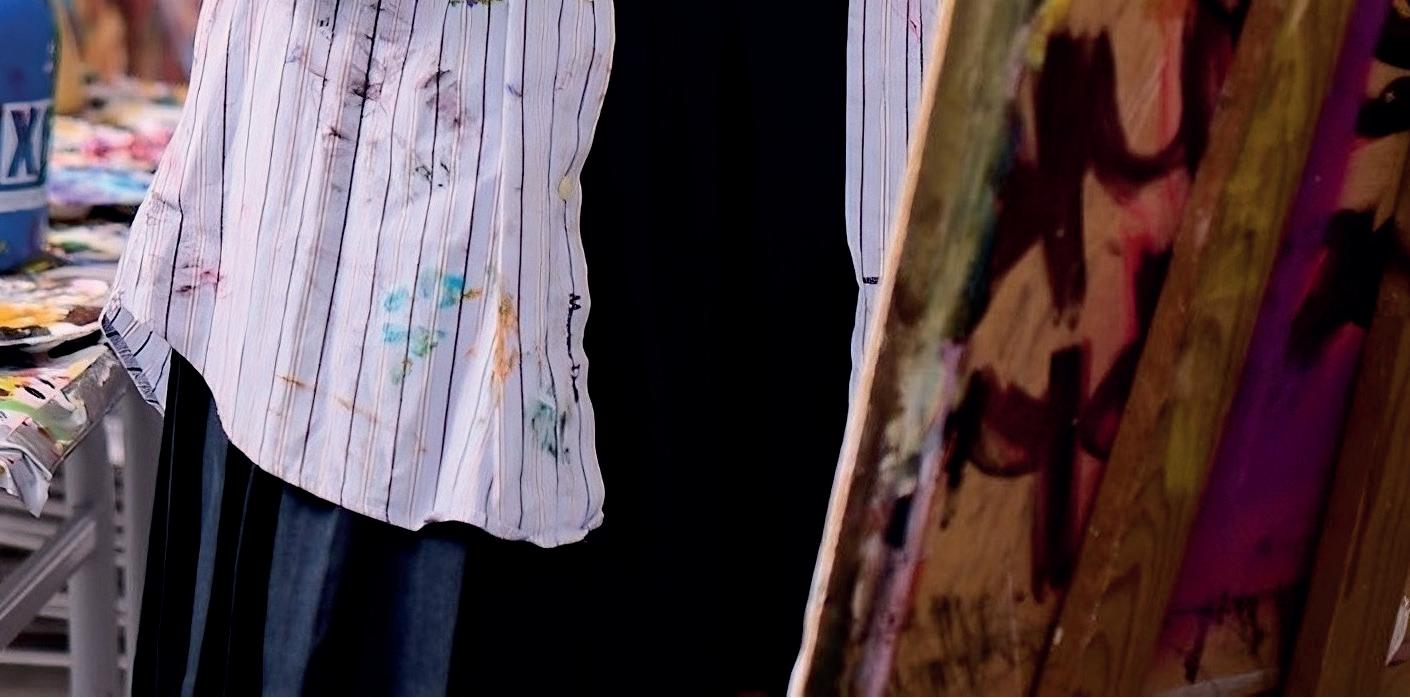










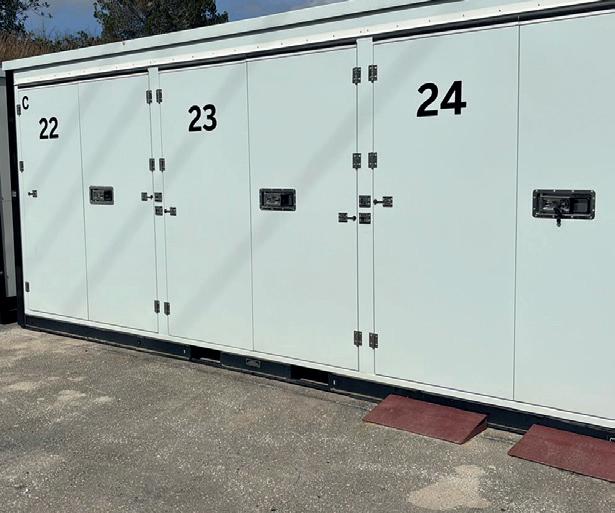

monumental Peñon de Ifach (The Rock), these beaches are wide, flat, and covered in perfect golden sand. Get ready to pose!
1. CALA DEL CANTAL ROIG (The fresh fish frenzy!)
Vibe: Authentic, tiny, and delicious!
Verdict: A tiny, protected cove that sits RIGHT next to the bustling fishing port and the incredible 2,000-year-old Roman fish farms. This is where you grab a dip after watching the fish auction! WARNING: The sand is coarser, but the proximity to the port means you can jump straight from the beach to the best seafood restaurants in town! Boat-to-plate in minutes!



2. PLAYA DE LA FOSSA (The A-List Golden Mile)
Vibe: Electric, packed, and a non-stop party!
Verdict: This is Calpe’s absolute show-stopper! It sits on the north side of The Rock, offering views so stunning they belong on a postcard. It’s a wide, golden sprawl backed by a promenade jammed with bars and shops. The water is shallow and safe for the little ones, making it the perfect spot for a full-day family frenzy! Unbeatable for people-watching!

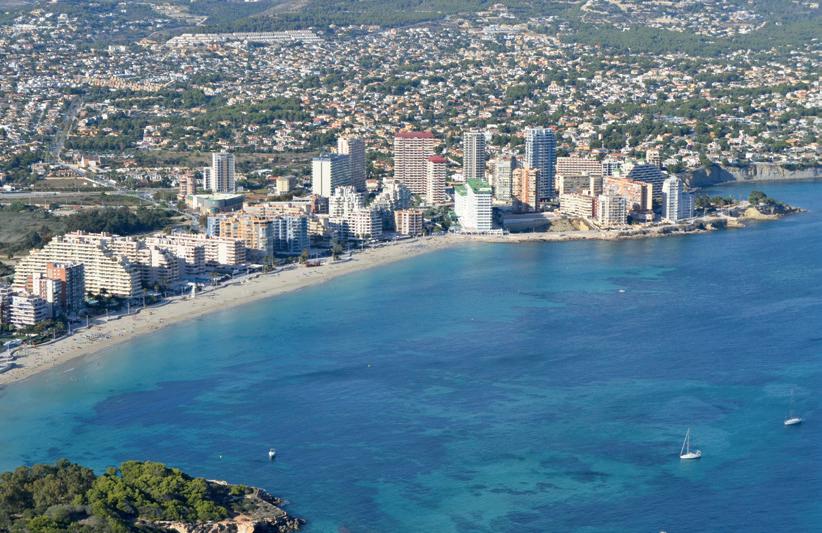
3. PLAYA DEL ARENAL-BOL (The peaceful posh spot)
Vibe: Long, relaxed, and secretly posh. Verdict: Heading to the south, this sweeping bay is the longest stretch of sand and often a slightly calmer alternative to Fossa. Its unique backdrop? The mysterious, shimmering Salt Flats (Las Salinas), which attract those beautiful pink fl amingos. Perfect for a long, quiet, celeb-style paseo (stroll) away from the madding crowds.
If you like your beaches rugged, quiet, and crystal clear, Altea is your escape! You won’t find sand here - just smooth, gorgeous grey stones (bring those water shoes, lads!) that make the water shine like a turquoise jewel.
1. PLAYA DE LA RODA
(The main event... but it’s ALL stone!)
Vibe: Central, incredibly clear, and very chic.
Verdict: This is the heart of Altea’s coastline, running below the main town. It’s super accessible and has decent amenities, but the beach is made entirely of those classic smooth pebbles. The payoff? Water clarity is astonishingly good! It’s the perfect spot to show off your new swimsuit before hitting the bohemian shops in the Old Town.
2. CALA DE LA SOLSIDA
(Warning: full nudity escape!)
Vibe: Secluded, remote, and 100% au naturel!
Verdict: This is the ultimate escape!
Tucked away north of the marina, Solsida is notoriously difficult to reach - you’ll need tough shoes and a sense of adventure. The reward is peace, unbelievably clear water, and near-total seclusion. Be warned: it is officially a naturist beach, so leave your inhibitions (and your clothes!) at home!

3. CAP BLANCH (The dive spot secret)
Vibe: Quiet, expansive, and natural escape.
Verdict: Running south towards Albir, this stretch of pebble and shingle is much quieter than the central beach. It’s a local favourite for tranquility and, crucially, for the spectacular water quality. If you want to snorkel or dive without the noise of jet skis, this is your hideaway!




AT Lady Elizabeth School (LES), we aim to build a community of open-minded families and students who are constantly developing and learning, ready to thrive and contribute in today’s global world.
Our students are independent, curious, and active, exploring their own paths through a wide range of academic options, including 20+ GCSE and A Level choices.
We provide British and international private education for children aged 2 to 18, offering each student a unique and enriching learning experience.
Our philosophy, ‘Where confi dence grows’, is rooted in discovery and personal growth, helping every student develop the skills and mindset to succeed.
Our bus service from Benidorm to Gandia ensures easy access for families across the area.
We warmly invite families to experience LES fi rsthand, either by attending one of our open days or arranging a meeting with our admissions team to learn more about how we can support your child’s journey.


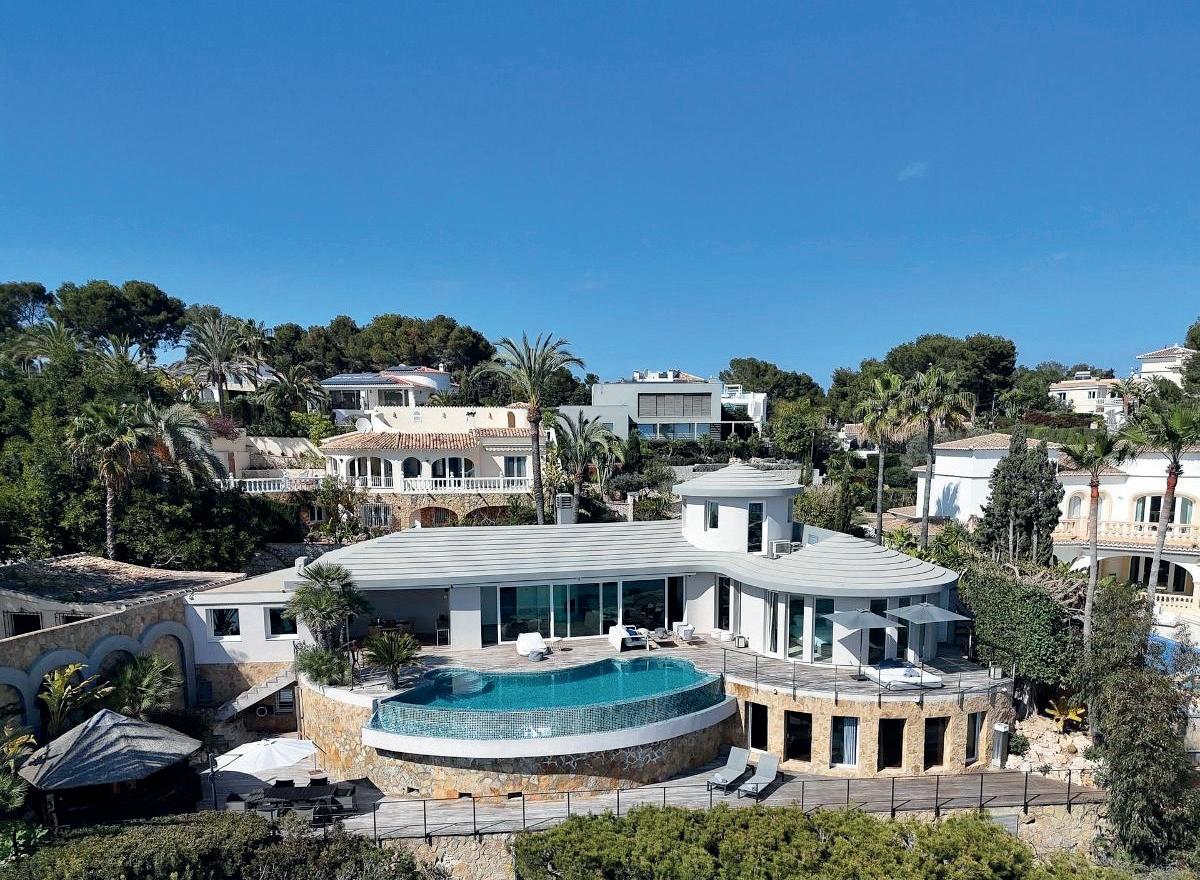
MAURICIO Umansky can be forgiven for checking his phone a lot. Before sitting down with the Olive Press in Moraira, the Los Angeles property mogul has been closing a ‘multi-million-dollar’ deal back across the pond.
A client wanted to buy a home in Aspen, offload two houses in Miami and California, and then purchase one in Texas.
All in a single phone call.
It is this high-octane lifestyle that turned Umansky into the global face of luxury real estate –and a Netflix star to boot.
Just as The Agency Costa Blanca North was opening its doors in January 2024, season two of Buying Beverly Hills was about to launch.
It’s enticing stuff: with one episode covering the sale of a $28 million mansion, another a peek around an NBA stars’ home.
Married for nearly three decades to actress and television personality Kyle Richards –known for The Real Housewives of Beverly Hills and as the aunt of Paris Hilton – Mauricio has built an empire grounded in family, authenticity, and ambition.
Three of his daughters – Farrah Brittany, Alexia Umansky, and Sophia Umansky – have followed in his footsteps, working within the business closing $12.4 billion in sales each year.
And this relentless drive to grow The Agency’s empire is what brought Umansky to the Costa Blanca on a sun-splashed autumn day.
Something about the Costa Blanca reminds him of Aspen – the world’s most expensive ski resort.
And that, he says, holds the secret to his next big venture.

By Joshua Parfitt

‘Bullish’ on the Costa Blanca
To understand Mauricio Umansky, you have to roll the clock back 24 years.
It was during the recession of 1991–92 that Umansky walked away from his father’s textile business to take a gamble on California’s high-stakes property market.
His first sale was a modest $700,000 home.
His second closed at $6 million.
Within a few years, he had become the top-selling real-estate agent in California – and the third in the United States.
Following a high-profile split from Hilton & Hyland, he co-founded The Agency in 2011.
You can see a theme here.
Just as the global economy began bouncing

back from the COVID-19 downturn, Umansky was already plotting his next business expansion across the Atlantic.
The Agency’s Spanish footprint began in Port d’Andratx in Mallorca, then followed Marbella
In January 2024, the Costa Blanca North office in Moraira became the third European outpost.
“I think there’s great potential in Spain,” Umansky tells the Olive Press. The Agency now has six offices in Spain.
“The value for money is incredible compared to other luxury markets. I’ve just been at a villa today, right on the beach in the town, that you can purchase for just over five million.
“I haven’t seen many properties in the world with that much frontage on such a beautiful, beautiful ocean.”
With low interest rates and steady demand for luxury homes in enclaves like Moraira, Xàbia and Altea, he says he’s ‘bullish’ about the Costa Blanca.
Then comes the comparison that makes property insiders lean in.
“Aspen is its own little micro-climate,” he explains, referring to the Colorado ski haven that tops global charts for prime-real-estate values.
Even when the wider market slows, Aspen keeps moving, because the people who buy there always buy.
It’s a comparison he doesn’t make lightly.
The Costa Blanca, he believes, has that same enduring allure of limited space, international appeal, and a market that shrugs off trends.
Of course, The Agency isn’t the first luxury brokerage to spot opportunity along this coast, where Moraira regularly posts the highest land values in the Valencian Community.
Others have come before.
But Umansky insists his company holds a few secrets that give them an edge.
Innovations, he hints, that could soon change the way Europe’s most exclusive properties are bought and sold.
Keen-eyed readers will have seen the trump card Mauricio Umansky holds over competitors. If not, I’ll let Alistair Barton, Managing Partner at The Agency Costa Blanca North, spell it out.
“Most estate agencies hate it when somebody walks into the office and says, ‘We’re interested in Moraira, but we’re also looking at the Costa del Sol or even Portugal.
“For us at The Agency, that’s fantastic.”
Barton explains how the company’s global network has already allowed him to sell homes to clients based in Canada and then, from his desk in Moraira, assist with transactions in Mexico, Portugal the Netherlands, and Florida.
The result, he says, is a client-focused service that keeps people coming back.
Unlike traditional agencies that treat each sale as a one-off transaction, The Agency builds

‘long-term relationships’ that span continents –and years.
“Already, I have the phone ringing constantly with valuation requests,” Barton adds.
“And within the nearly two years we’ve been open, we’ve already had buyers come back and give us other properties to sell. I’d say we’ve reached about a 50–50 seller and buyer split in our client base.”
Across the table, Umansky glances up from his phone.
“I just checked last night,” he says, grinning.
“Globally, sellers make up 50.6% of The Agency’s client base.”
It’s a staggering statistic – especially at a time when the Bank of Spain estimates a national shortfall of around 400,000 to 450,000 homes, and estate agencies are scrambling for homes to sell.
But that strength is about to become something even more powerful.
At several points in the interview, Umansky and Barton refer to a new ‘tech system’ quietly being developed within The Agency.
Umansky predicts it will cause what he calls “a disruption” in how high-end property is bought and sold.
“We’re the leaders now.”
And with that, the man who’s conquered Beverly Hills hints how his next real estate revolution is about to unfold, right here on the Costa Blanca.
